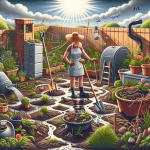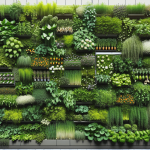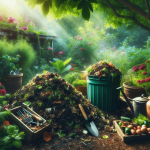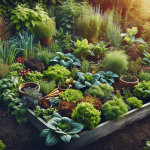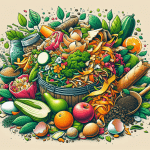This post may contain affiliate links. As an Amazon Associate, we may earn commissions from qualifying purchases.
Growing and caring for mushrooms in your garden might seem like a daunting task, but with the right guidance, it can become a highly rewarding and enriching experience. This article will walk you through the essential steps to cultivate these earthy delights right in your backyard, from selecting the right mushroom species to creating the perfect growing conditions. You’ll discover tips and tricks for maintaining your mushroom garden, ensuring healthy growth, and harvesting your bounty. Get ready to embark on a new and exciting gardening adventure, turning your garden into a haven for these fascinating fungi.
How Do I Grow And Care For Mushrooms In My Garden?
Have you ever wondered how to grow and care for mushrooms in your garden? Mushrooms are a fantastic addition to any garden, not only because they are fun to grow but also because they bring numerous health benefits to the table. Plus, growing your own mushrooms can be a lot more affordable compared to buying them at the store.
In this article, we will guide you through the entire process, step by step, from selecting the right mushrooms to harvesting them. We’re excited for you to embark on this mushroom-growing journey and can’t wait to share these tips with you!
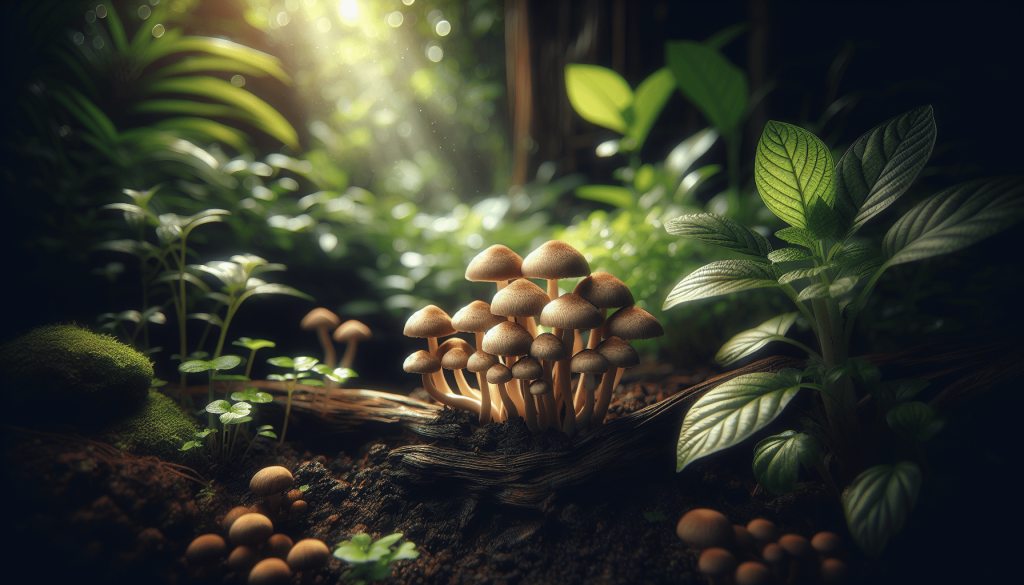
Why Grow Mushrooms?
First things first, why should you consider growing mushrooms in your garden? The reasons are plenty, and they go beyond just enjoying fresh mushrooms.
Health Benefits
Mushrooms are packed with essential nutrients like vitamins, minerals, and antioxidants. They can boost your immune system, improve heart health, and even help manage weight. Some mushrooms, like shiitake and reishi, have medicinal properties that can be beneficial.
Cost-Effective
Growing your own mushrooms can save you a lot of money in the long run. Store-bought mushrooms can be expensive, especially if you consume them regularly. By growing your own, you have a steady, inexpensive supply.
Fun and Educational
Growing mushrooms can be an exceptionally rewarding hobby. It’s not only a fun activity but also an educational one for kids and adults alike. It provides an opportunity to learn about fungi and the ecological role they play.
Choose the Right Mushrooms
Before you get started, it’s crucial to choose the right type of mushroom to grow. Some mushrooms are easier for beginners, while others require a bit more expertise.
Beginner-Friendly Varieties
If you’re new to mushroom growing, consider starting with varieties that have a higher success rate. Here are some options:
| Mushroom | Light Needs | Substrate |
|---|---|---|
| Oyster | Indirect light | Straw, sawdust, coffee grounds |
| Shiitake | Low light | Hardwood logs, sawdust |
| White Button | Complete darkness | Compost, manure |
Advanced Varieties
Once you get the hang of mushroom cultivation, you might want to experiment with more exotic types:
| Mushroom | Light Needs | Substrate |
|---|---|---|
| Morel | Indirect light | Decaying wood, leaf litter |
| Lion’s Mane | Low to indirect light | Hardwood, sawdust |
| Maitake (Hen of the Woods) | Indirect light | Wood-based substrates |
Preparing Your Garden
One of the great things about growing mushrooms is that you don’t need a lot of space. However, you do need to prepare the area properly to ensure the best conditions for growth.
Selecting a Spot
When selecting a spot in your garden, keep in mind the light and moisture requirements of your chosen mushroom type. Most mushrooms need a shady, moist environment to thrive. Make sure the area is sheltered from direct sunlight and protected from wind.
Soil Preparation
If you’re growing mushrooms directly in the garden soil, you need to ensure it’s rich in organic matter. Compost and manure are excellent choices for enriching your soil. Additionally, make sure the soil is well-drained but retains enough moisture to keep it damp.
Setting Up the Growing Medium
The growing medium, also known as the substrate, is crucial for mushroom cultivation. Different mushrooms require different substrates. Here’s a breakdown:
Straw and Sawdust (for Oyster and Shiitake)
Straw and sawdust are popular substrates for growing oyster and shiitake mushrooms. You can easily find straw at garden centers, and sawdust can often be sourced from local sawmills.
To prepare these substrates:
- Pasteurize: Boil straw or sawdust in water to kill off any competing fungi or bacteria.
- Cool Down: Let it cool to room temperature.
- Drain: Ensure it is well-drained but still retains some moisture.
Hardwood Logs (for Shiitake and Lion’s Mane)
Using hardwood logs is a traditional method for growing mushrooms. It can be a bit more labor-intensive but yields fantastic results.
To get started:
- Choose Logs: Opt for hardwood varieties like oak, poplar, or maple.
- Inoculate: Drill holes into the logs and insert mushroom spawn using a spawning tool.
- Seal: Cover the holes with wax to prevent contamination.
Coffee Grounds and Manure (for Button Mushrooms)
Used coffee grounds and manure offer a nutrient-rich environment for mushrooms like white button mushrooms.
Steps to prepare:
- Collect: Gather used coffee grounds or well-aged manure.
- Mix: Create a mix that is about 50% coffee grounds and 50% manure.
- Sterilize: Pasteurize the mixture to eliminate any unwanted organisms.
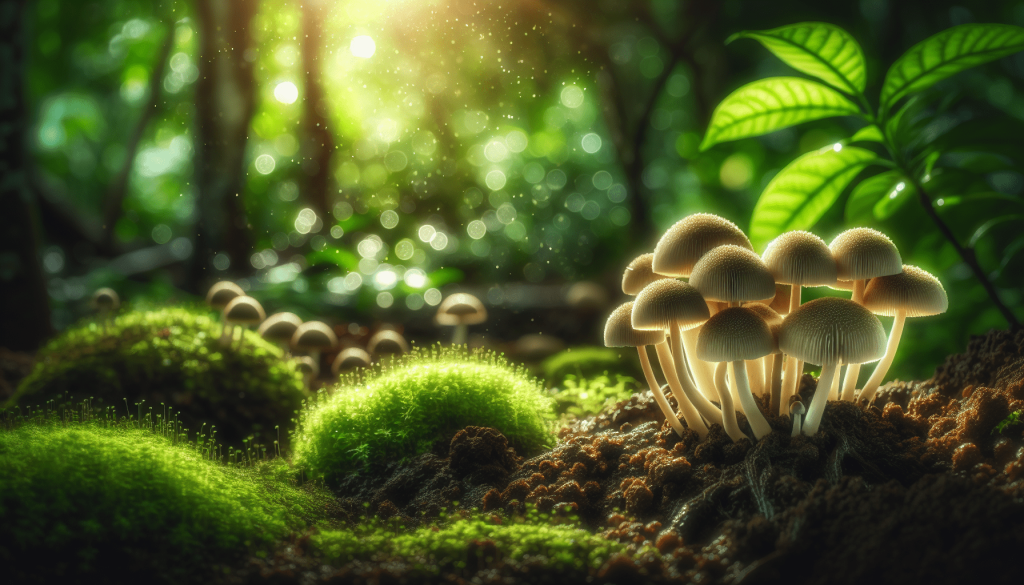
Inoculating the Substrate
Inoculation is the process of introducing mushroom spawn into the substrate. This is when the actual mushroom cultivation begins!
Types of Mushroom Spawn
There are a few different types of spawn you can use, each with its pros and cons:
| Type | Pros | Cons |
|---|---|---|
| Grain Spawn | Fast colonization | More susceptible to contamination |
| Sawdust Spawn | More resilient | Slower colonization |
| Plug Spawn | Easy to use with logs | Not suitable for all substrates |
How to Inoculate
- Prepare Tools: Sterilize all your tools and workspace to avoid contamination.
- Introduce Spawn: Mix your chosen spawn thoroughly with the substrate.
- Pack: Place the inoculated substrate into containers, bags, or directly into the garden bed.
- Seal: Ensure the container is sealed but has tiny holes for air exchange.
- Label: Label your containers with the date and type of mushroom.
Creating the Right Environment
Mushrooms can be picky about their growing environment. Let’s break down the essential conditions you need to provide:
Temperature
Different mushrooms have different temperature needs. Here’s a quick guide:
| Mushroom | Optimal Temperature (°F) |
|---|---|
| Oyster | 55-65 |
| Shiitake | 50-70 |
| White Button | 60-74 |
| Morel | 45-60 |
| Lion’s Mane | 55-65 |
| Maitake | 50-65 |
Humidity
Mushrooms need a consistently humid environment to grow well. Aim for 80-95% humidity levels. You can maintain high humidity by misting the area regularly and covering the growing medium with a humidity tent.
Airflow
Good air circulation is essential to prevent contamination and promote healthy growth. Ensure that your growing area has adequate ventilation. Too much air, however, can dry out the substrate, so balance is key.
Caring for Your Mushrooms
Once you’ve set everything up, it’s time to take care of your mushroom crops. This phase is crucial to ensure a healthy and bountiful harvest.
Watering
Mushrooms need moisture to thrive but avoid overwatering. Mist the substrate lightly once or twice a day, depending on how quickly it dries out.
Monitoring Growth
Keep an eye on the progress:
- Mycelium Growth: You should see white strands of mycelium spreading through the substrate within a couple of weeks.
- Pinning: Small mushroom pins will start to appear.
- Full Mushrooms: Within a week or so after pinning, full-grown mushrooms should be ready for harvest.
Troubleshooting Common Issues
Growing mushrooms is not without its challenges. Here are some common issues and how to address them:
| Issue | Cause | Solution |
|---|---|---|
| Contamination (mold) | Poor sterility during inoculation | Sterilize tools and environment |
| Slow Growth | Inadequate temperature or humidity | Adjust conditions, mist more |
| No Pinning | Wrong substrate or spawn | Check substrate compatibility |
| Mushy Mushrooms | Overwatering | Reduce watering frequency |
Harvesting
The moment you’ve been waiting for! Harvesting mushrooms is incredibly satisfying. Here’s how to do it:
When to Harvest
Mushrooms should be harvested before they fully open and release their spores. This is when they are at their peak flavor and texture.
| Mushroom | Harvest Time |
|---|---|
| Oyster | When edges start to curl up |
| Shiitake | When caps are 70-80% open |
| White Button | Before caps fully open |
| Morel | When caps are 1.5 to 2 inches tall |
| Lion’s Mane | When spines are long and well-developed |
| Maitake | When clusters are firm and dense |
How to Harvest
- Clean Hands: Always wash your hands before harvesting to prevent contamination.
- Cut Gently: Use a sharp knife to cut the mushroom at the base to avoid damaging the mycelium.
- Store Properly: Store harvested mushrooms in a paper bag in the refrigerator. They can last up to 10 days.
Post-Harvest Care
Even after you harvest the first batch, your growing medium may still have plenty of life left. Here’s how to care for it for multiple flushes of mushrooms:
Resting Period
Allow the substrate to rest and recover. Keep it moist and maintain the right conditions for another cycle of growth.
Additional Nutrients
Sometimes adding a bit more substrate material, like fresh straw or sawdust, can help invigorate the mycelium for another flush.
Common Mistakes to Avoid
It’s normal to make mistakes along the way. Here are some common pitfalls to avoid:
- Skipping Sterilization: This can lead to contamination, so always sterilize your tools and workspace.
- Incorrect Substrate: Ensure you’re using the right substrate for the mushroom variety you’re growing.
- Poor Conditions: Not maintaining proper temperature, humidity, and airflow can hinder growth.
- Overhandling: Avoid disturbing the growing mushrooms too frequently.
Conclusion
So there you have it—a comprehensive guide to growing and caring for mushrooms in your garden. From choosing the right type of mushroom to harvesting them, we’ve covered all the basics you need to get started. Now it’s your turn to put this knowledge to practical use.
Happy mushroom growing! If you have any questions or tips you’d like to share, feel free to leave a comment below. We’d love to hear about your mushroom-growing adventures!

